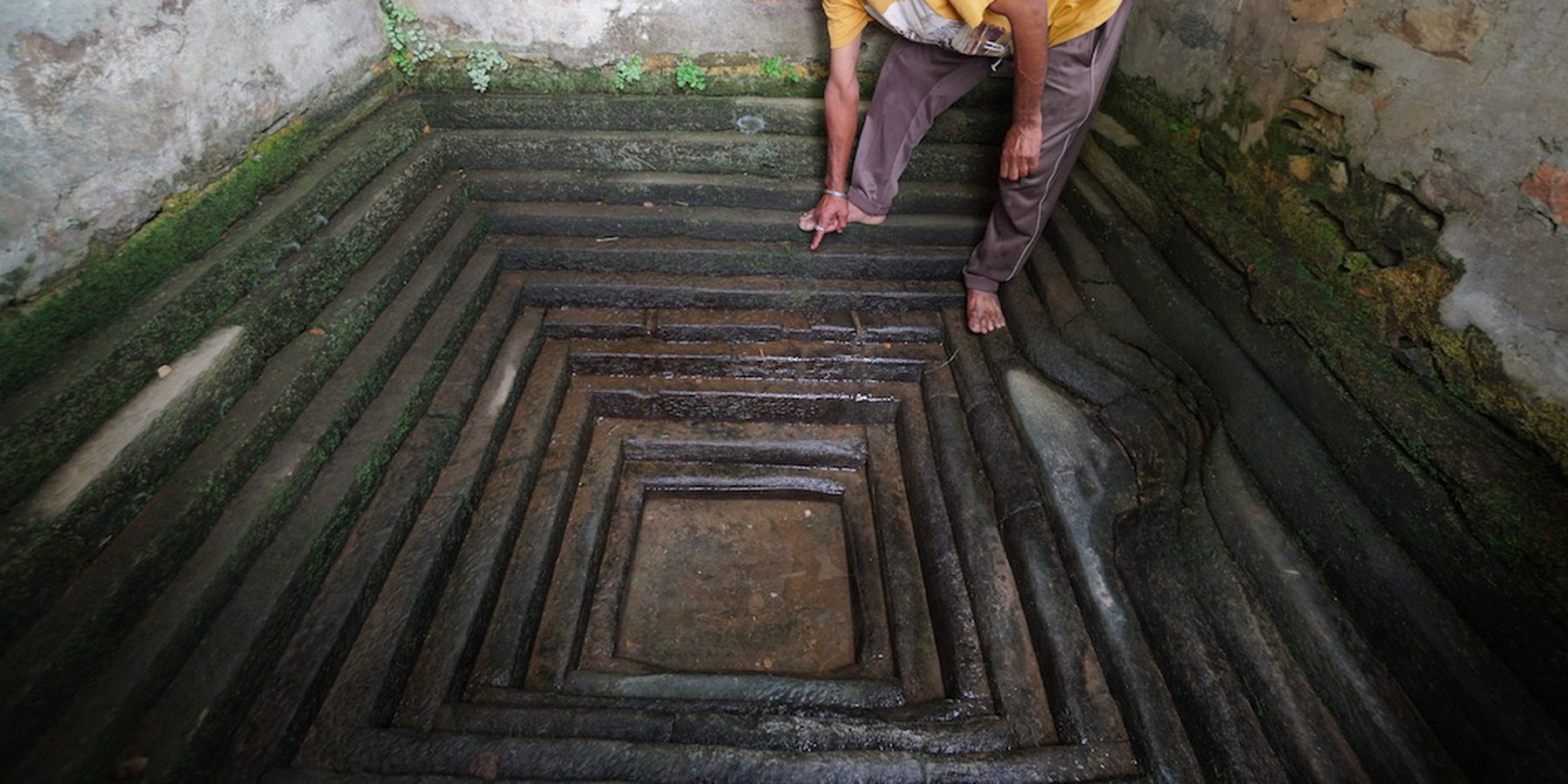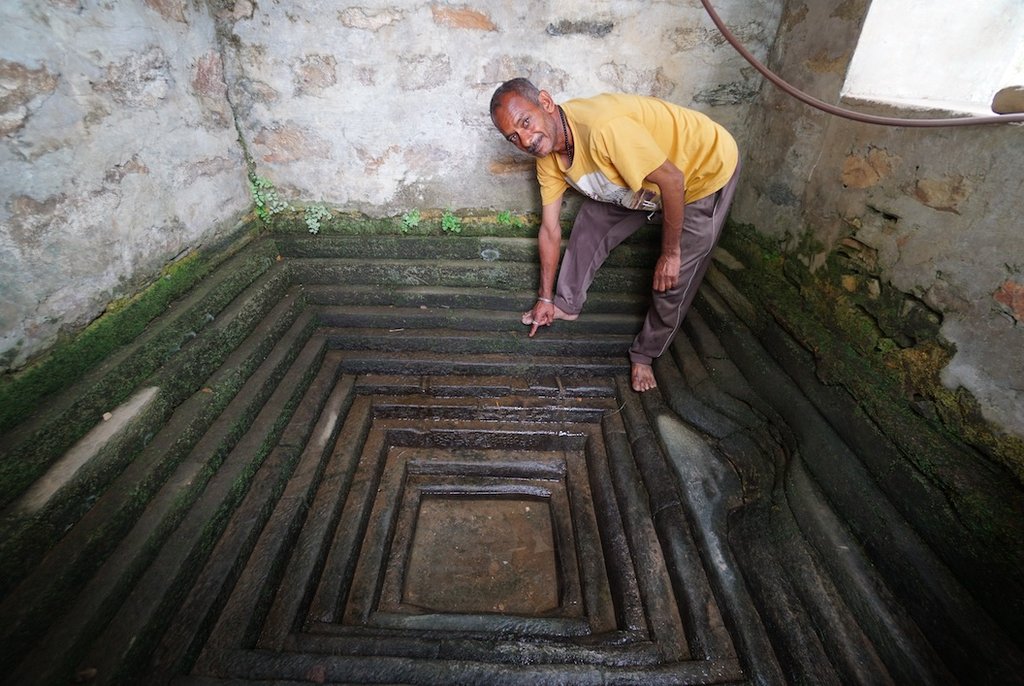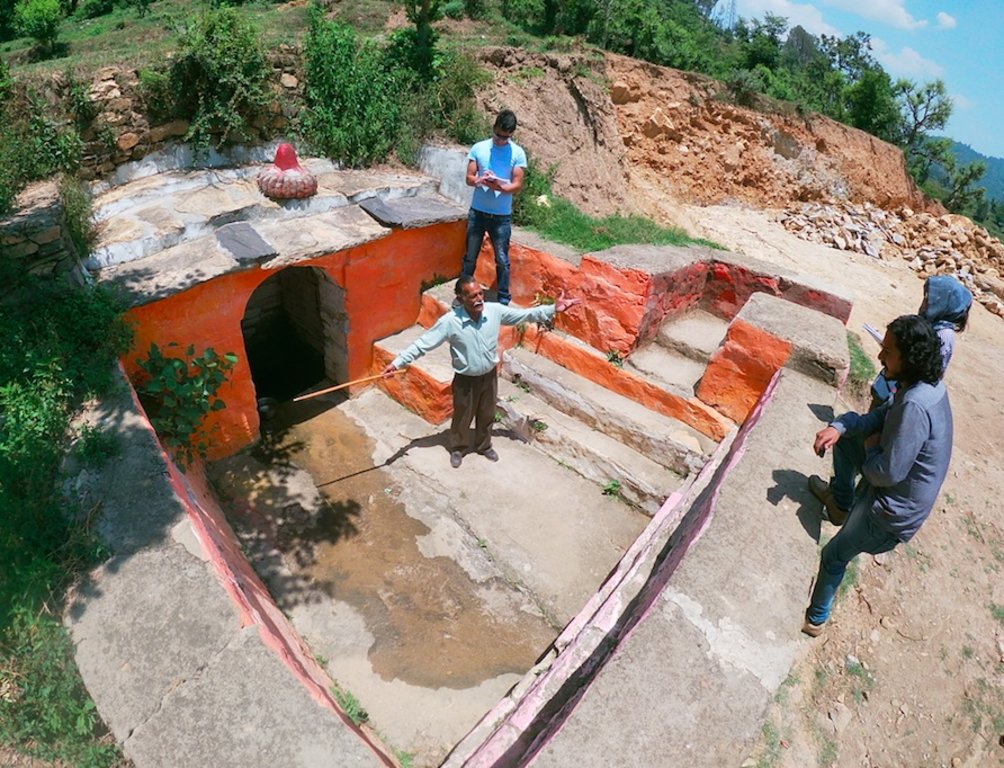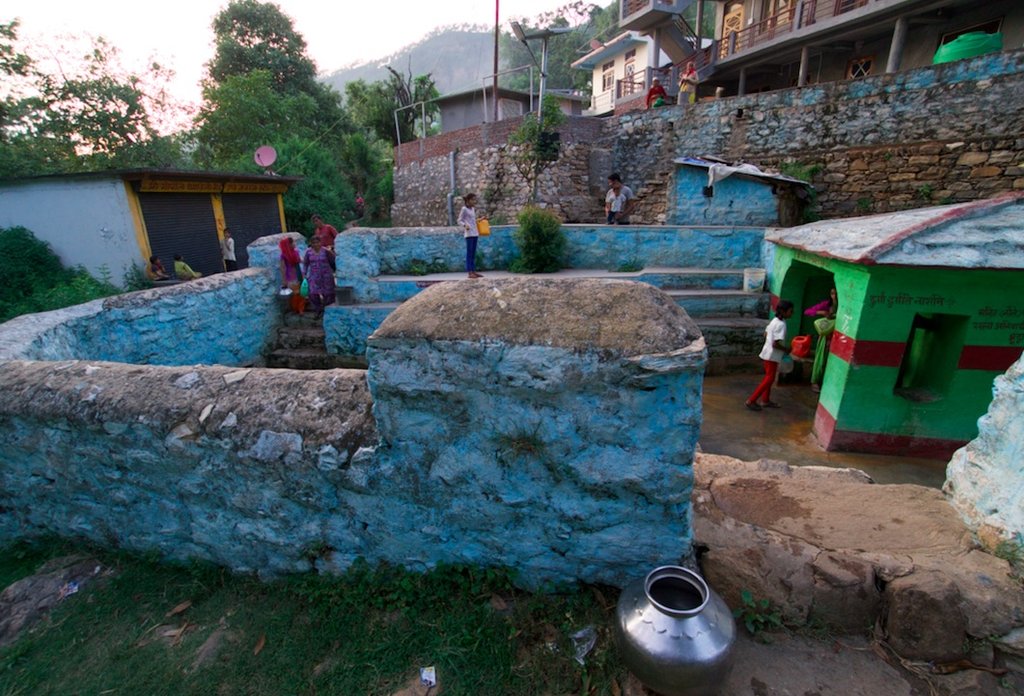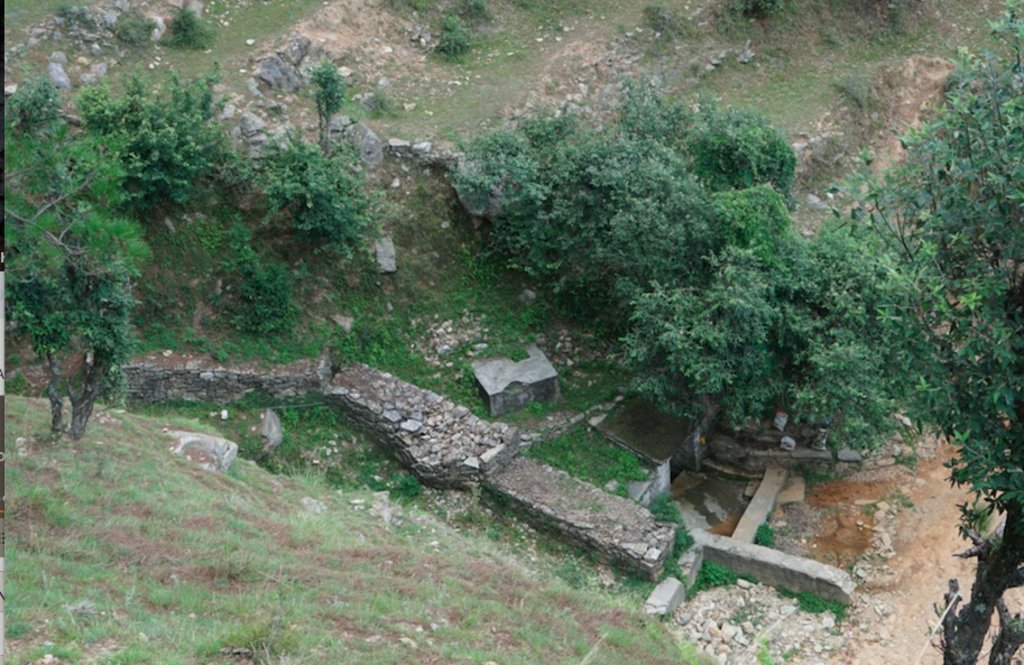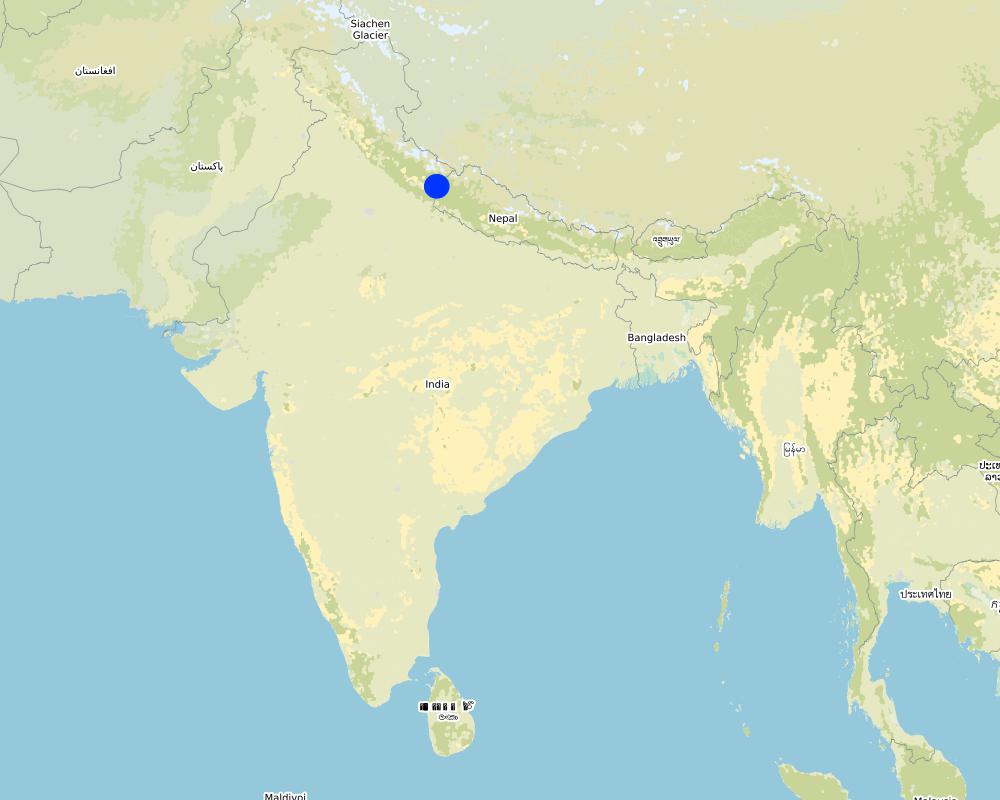Naula Management and Conservation [Индия]
- Создание:
- Обновить:
- Составитель: Jaclyn Bandy
- Редактор: –
- Рецензент: Hanspeter Liniger
Naula (depression well, indigenous water harvest technology)
approaches_5202 - Индия
Просмотреть разделы
Развернуть все Свернуть все1. Общая информация
1.2 Контактные данные специалистов и организаций, участвующих в описании и оценке Подхода
Ответственный (-ые) специалист (-ы)
землепользователь:
Jagdamba Joshi
+91 90120 89421
Sarpanch (Chief) of the Nakina Van Panchayat (Forest Council)
Nakina Village, Pithoragarh Bloc, Uttarakhand
Индия
землепользователь:
Patni Pooran Chandra
+91 94113 48434 / +91 96395 41519
Digtoli Village
Digtoli Village, Pithoragarh Bloc, Uttarakhand
Индия
Название проекта, содействовавшего документированию/оценке Подхода (если применимо)
Onsite and Offsite Benefits of SLMНазвание организации (-ий), содействовавших документированию/оценке Подхода (если применимо)
ICIMOD International Centre for Integrated Mountain Development (ICIMOD) - НепалНазвание организации (-ий), содействовавших документированию/оценке Подхода (если применимо)
G.B. Pant Institute of Himalayan Einvironment & Development (G.B. Pant Institute of Himalayan Einvironment & Development) - Индия1.3 Условия, регламентирующие использование собранных ВОКАТ данных
Когда были собраны данные (на местах)?
18/06/2019
Составитель и ответственный/-ые специалист(-ы) согласны с условиями, регламентирующими использование собранных ВОКАТ данных:
Да
1.4 Ссылка (-и) на Анкету (-ы) по Технологиям УЗП
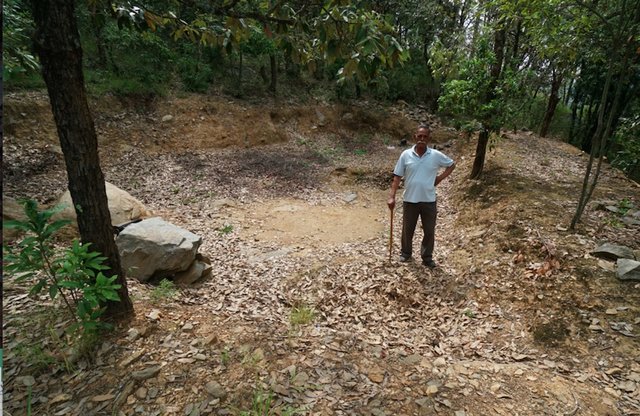
Recharge Ponds and Recharge Trenches [Индия]
Recharge ponds (Chaals or khals) and recharge trenches (khanti) are common methods to catch the surface runoff and increase the infiltration to recharge groundwater and aid in natural spring recharge in the middle mountain regions.
- Составитель: Jaclyn Bandy
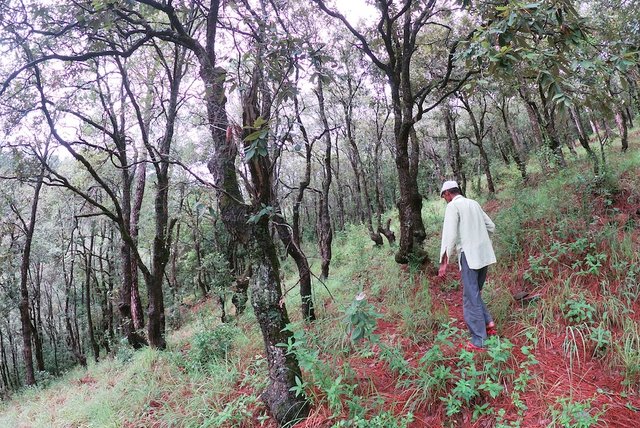
Broadleaf Plantations, Assisted Tree Regeneration and Fodder Nurseries … [Индия]
Natural assisted regeneration of broadleaved species, a small oak plantation and a fodder nursery have been established in the Nakina community forest (intervention area: 10 ha), supporting fodder tree species such as Banj Oak and Falyaat, as well as various subtropical temperate fodder grass species. This has improved the livelihood …
- Составитель: Jaclyn Bandy
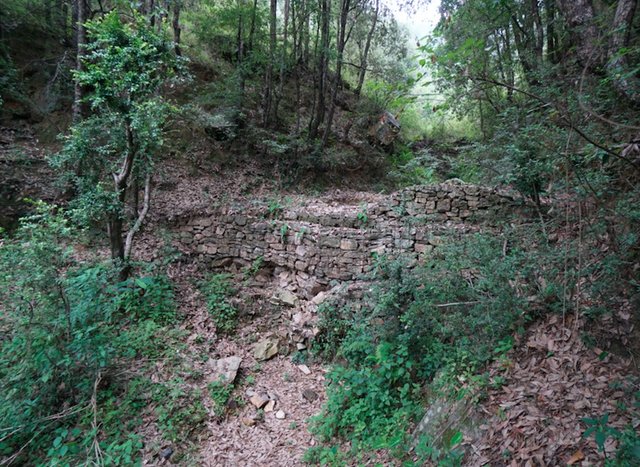
Stone Check Walls and Check Dams for Soil … [Индия]
Stone Check Dams/Walls, Retainment Walls, and a Water Diversion Wall has been constructed in Nakina Village and Nakina Community Forest to help protect their settlements, agriculture land, forest land, and preserve the hilly landscape. These structures serve to reduce the runoff velocity (lowering the rate of erosion and gullying in …
- Составитель: Jaclyn Bandy
2. Описание Подхода УЗП
2.1 Краткое описание Подхода
Naulas are shallow, four-sided stepped wells designed to collect water from subterranean seepages or springs and are used to meet domestic water needs by the local communities. Naula management and conservation encompasses a range of activities that preserve their structure and function.
2.2 Подробное описание Подхода
Подробное описание Подхода:
Naulas are imperative sources of natural seepage of drinking water and are considered the most important hydraulic structures to the villages in hill regions of Uttarakhand. They appear as a dry stone masonry structure, normally with a four-sided (rectangle or square) shape with stairs on all the sides and are commonly covered by stone slates and an erected wall on three sides. Since ancient times, water rituals are practiced within the communities and the water from these naulas have idols of various deities like the sun, moon, Earth, Vishnu, Ganesh etc. The main motive of keeping idols of gods and goddesses tied to the naulas is to preserve these structures from pollution and other harmful anthropogenic activities.
The efforts to preserve naulas include; building structural or vegetative barriers on the slope above to prevent physical damage, pollution from runoff and other erosive processes, establishing barriers of entry to deter wildlife and insects, initiating cleaning routines in the villages (scrubbing/disinfecting and clearing debris or weeds around the naulas).
The villages of Nakina, Digtoli, and Bhurmuni have carried out their own traditional measures to conserve these sacred structures and the water that flows into them. Sacred tree species like the peepal and banyan trees have been planted near naulas to signify its sanctity and to protect and shade it. To ensure the potability of a naula's water, biweekly cleaning regimes are undertaken. Structural measures such as check walls, check dams, and water channels have been made above the naulas. Additionally, wildlife entry is inhibited with cloth drapes that cover the naula's entrance, and some villages have established a protective enclosure around the naula.
Routine Naula conservation activities are taken up by those that collect the water, which include mainly the women and children. There is a water queue system in Nakina Village, in which people receive a specific time slot to take the water from the naula. This helps with keeping track of water use and promotes equitable use of water in the village. Other arduous tasks such as constructing the structural technologies include male participation. Monthly or bimonthly community meetings and daily checks on the Naulas help enforce the approach objectives. The villagers are are the sole stakeholders and take up full ownership and water user rights.
Generally, the older community members in these villages stress the need of Naula conservation and management to a greater degree. Members of the younger generation are less concerned and do not exhibit the same level of sensitivity, although they are aware of their importance to the community. The future effectiveness of the approach will depend on village participation and the level of dependency on the Naula for water during the dry season. With the drying of springs and increased use of pipe-schemes (though unreliable), external sources of water may replace this indigenous water harvesting technique.
2.3 Фотографии, иллюстрирующие Подход
2.5 Страна/ регион/ место, где применялся Подход
Страна:
Индия
Административная единица (Район/Область):
Uttarakhand
Более точная привязка места:
Digtoli, Pithoragarh Bloc
Комментарии:
Villages: Digtoli, Nakina, Bhurmuni
Map
×2.6 Даты начала и окончания реализации Подхода
Если год начала реализации Подхода достоверно неизвестен, дайте примерную оценку:
более 50 лет назад (традиционная)
2.7 Тип Подхода
- традиционная/ местная система землепользования, используемая коренным населением
2.8 Каковы цели/ задачи Подхода
Maintenance and preservation of the indigenous water harvesting technology, the naula. By protecting this structure and the catchment area around it, the villages can protect their precious water resources and sustain a long-lasting tradition.
2.9 Условия содействующие применению Технологии/ Технологий в рамках Подхода или затрудняющие его
Социальные/ культурные/ религиозные нормы и ценности
- содействуют
Various religious ceremonies/rituals are still carried out around the naulas to this day. Lord Vishnu is associated with water in Hindu scriptures and mythology. Hence many naula have idols of Vishnu installed in them or sculpted on their stone walls. The need to revere and care for the naula is stressed by older generations.
- затрудняют
Due to shifting cultural dimensions, government or office jobs are considered to have a higher status than that of farmers in rural areas. These days rural youth have their minds set on getting a government or an office job. They are not willing to toil on their farms. This is severely straining the traditional systems of
managing common property resources
Наличие/ доступность финансовых ресурсов и услуг
- содействуют
Little external financial resources are required
- затрудняют
Less attention/investment is being directed to natural resources due to outmigration an off-farm employment opportunities
Институциональные условия
- затрудняют
With better education and the increasing share of non-farm economy in the national economy, the potential for obtaining off-farm employment is growing rapidly. Non-farm employment (NFE) has affected traditional water management systems. NFE opportunities, particularly for rural males, have changed the traditional occupation structures in the villages. When a family's reliance shifts from agriculture to an off-farm source of income, its incentive to participate in the traditional voluntary chores required to maintain common property resources decreases. This reduces the supply of voluntary labor for tasks like the management and maintenance of naulas. Traditional sanctions against such households are less effective, thereby eroding local norms and authority. Families that are headed by women when the male head is away have difficulty in obtaining their rightful share of water. Interfamily disputes erupt on the return of the male heads, reducing the community's unity that is so essential for managing common property resources.
Сотрудничество/ координация действий
- содействуют
The approach is traditionally community driven, site specific and requires little to no external input from other actors outside of the village.
Нормативно-правовая база (землевладение, права на земле- и водопользование)
- содействуют
There are no formal institutions or rules/written records of water rights and devices for regulating water use and their flow structures. In most traditional settings, water rights of individuals users are known, even if they are not formally recorded. In general all users are expected to participate in operation, maintenance and cleaning chores.
- затрудняют
In the absence of formal records, however, this can be variable depending on the village.
Программные документы/ руководящие установки
- содействуют
According to traditional law, communities have had the ownership, control and rights to these water resources. They have had the freedom to build a variety of water harvesting structures based on their experiential knowledge and have designed them to fulfill their needs. Although the Kumaon Water
Rules of 1917 transferred ownership of water resources to the state, the colonial government did not enact any specific legislation for water in the Uttarakhand region. As a result, village communities continued to look after their naulas and other water harvesting structures.
Управление земельными ресурсами (принятие решений, осуществление и контроль за выполнением)
- содействуют
Traditional water collecting systems in Uttarakhand comprise a variety of community control methods. Their assortments started from the differences in the local circumstances. Many of these plans were
initially made by local leaders, dynasties and kings or by the prosperous people of the society. They display a diversity of technologies and minimal state intervention in water rights or management.
- затрудняют
Sometimes, these systems failed to ensure social justice. Caste discrimination, appears to be a common feature. In many locations, there are separate naulas for people of upper and lower castes. The
ones for the lower castes are usually smaller and unadorned structures by comparison. Care and maintenance is irregular and a large number are in a decrepit state.
Осведомленность в области УЗП, доступность технической поддержки
- содействуют
Объем работ, доступность рабочей силы
- содействуют
Naulas are typically close to the village (<500m), therefore combined community efforts make the workload and execution of this approach manageable, assuming their is collective participation.
3. Участие и распределение ролей заинтересованных сторон
3.1 Заинтересованные стороны, участвующие в реализации Подхода и их роли
- местные землепользователи/ местные сообщества
Nakina, Digtoli, and Bhurmuni Village
Local village authorities hold regular meetings with the people to organize, discuss and monitor the use/status of their water resources and naula structures/
3.2 Участие местных землепользователей/ местных сообществ на разных стадиях реализации Подхода
| Участие местных землепользователей/ местных сообществ | Перечислите участников и опишите их вовлеченность | |
|---|---|---|
| инициирование/ мотивация | самоорганизация | Village heads, community members, Nakina Van Panchayat (community forest council) |
| планирование | самоорганизация | Village heads organize a Gram Sabha (a meeting of all villagers in each village council area) and fulfill their obligations in local resource decision-making with active community participation. |
| выполнение | самоорганизация | |
| мониторинг/ оценка | самоорганизация | |
| нет |
3.4 Принятие решений по выбору Технологии/ Технологий УЗП
Укажите, кто принимал решение по выбору применяемой Технологии/ Технологий:
- исключительно землепользователи (по собственной инициативе)
Поясните:
This is a traditional model of community-driven, decentralized water governance. It is both replicable and sustainable depending on the village's particular leadership, culture, tradition and politics.
Поясните на чём было основано принятие решений:
- личный опыт и мнения (незадокументированные)
4. Техническая поддержка, повышение компетенций и управление знаниями
4.1 Повышение компетенций/ обучение
Проводилось ли обучение землепользователей/ других заинтересованных лиц?
Нет
4.2 Консультационные услуги
Есть ли у землепользователей возможность получать консультации?
Да
Укажите, где именно оказываются консультационные услуги:
- на полях землепользователей
- в постоянно функционирующих центрах
Описание/ комментарий:
There are several active organizations/ advisory services that are frequently engage with and are available to the communities. Some of these organisations include G.B. Pant, the Forest Department, and NGOs: Himalayan Sewa Samiti, CHEA, Swati Gramodyog Sansthan.
4.3 Институциональная (организационная) поддержка
В ходе реализации Подхода были ли организованы новые институциональные структуры или поддержаны уже существующие?
- да, умеренно
Укажите уровень, на котором структуры были укреплены или вновь созданы:
- местные
Опишите организацию, функции и ответственность, членство и т.д.
Nakina village and Nakina Van Panchayat (community forest council) in particular have strengthened their relationships with external institutions and have been receptive to new projects for sustainable water management and natural resource use. This has increased involvement of the community and strengthened approach participation. Additionally, it has increased awareness and the need for spring restoration interventions and sustainable land use within the catchment areas of the springs/naulas.
Укажите тип поддержки:
- финансовая
- повышение компетенций/ обучение
4.4 Мониторинг и оценка
Являются ли мониторинг и оценка частью Подхода?
Да
Комментарии:
Regular monitoring by the village community
Если да, будет ли данный документ использоваться для мониторинга и оценки?
Нет
4.5 Научные исследования
Были ли научные исследования частью Подхода?
Нет
5. Финансирование и внешняя материальная поддержка
5.1 Годовой бюджет мероприятий по УЗП в рамках Подхода
Если точный годовой бюжет неизвестен, укажите примерный диапазон затрат:
- < 2000
5.2 Финансирование и внешняя материальная поддержка, предоставляемая землепользователям
Предоставлялась ли землепользователям финансовая/ материальная поддержка для применения Технологии /Технологий?
Нет
5.3 Субсидии на отдельные затраты (включая оплату труда)
Если труд землепользователя был существенным вкладом, укажите, был ли этот вклад:
- добровольный
5.4 Кредитование
Предоставлялись ли в рамках Подхода кредиты на мероприятия УЗП?
Нет
5.5 Другие методы или инструменты стимулирования
Использовались ли другие методы или инструменты стимулирования для продвижения Технологий УЗП?
Да
Если да, поясните:
The World Bank aided Uttarakhand Decentralized Watershed Development Project (GRAMYA) implemented by Watershed Development Directorate of Uttarakhand
Government. It is operating since 2005 with the aim to mitigate water problems and addressing issues of other natural resources, with emphasis on women participation.
NITI Aayog (National Institution for Transforming India), Government of India has recently launched a National Programme on Regeneration of Springs in the Himalayan Region 2017).
6. Анализ влияния и заключительные положения
6.1 Влияние Подхода
Сумел ли Подход расширить возможности местных землепользователей, повысить участие заинтересованных сторон?
- Нет
- Да, немного
- Да, умеренно
- Да, существенно
Increased awareness of naula importance; enhanced collaborative water conservation and use within the community
Сумел ли Подход дать возможность принимать решения на основе подтвержденных фактов?
- Нет
- Да, немного
- Да, умеренно
- Да, существенно
Traditional approaches encompass ecosystem thinking, and therefore good practices such as planting trees above the naula and creating a favorable environment in the catchment area have been adopted by these communities for many generations. Though there has been improvements in infrastructure, officially provided water supply systems have either not reached the remote rural villages or where provided are unreliable, poorly maintained, and not the preferred source of drinking water.
Сумел ли Подход помочь землепользователям внедрить и поддерживать технологии УЗП?
- Нет
- Да, немного
- Да, умеренно
- Да, существенно
Increased sensitivity to the importance and impact of the surrounding ecosystem to the springs/naula function.
Сумел ли Подход улучшить согласованность действий и повысить рентабельность применения практик УЗП:
- Нет
- Да, немного
- Да, умеренно
- Да, существенно
The approach supported community ecosystem-based thinking and has extended to interventions with the Nakina Van Panchayat (community forest council)
Сумел ли Подход мобилизовать/ расширить доступ к финансовым ресурсам для применения практик УЗП?
- Нет
- Да, немного
- Да, умеренно
- Да, существенно
Active participation of the community and strong organizational qualities have helped extend their network and resource base
Сумел ли Подход расширить знания и возможности землепользователей в применении практик УЗП?
- Нет
- Да, немного
- Да, умеренно
- Да, существенно
This approach increased engagement and refined attention to their main drinking water resources. Because spring discharge is decreasing, people have started to extend interventions in the microwatersheds or catchment areas of the springs for ground water recharge. This includes establishing plantations, avoiding overgrazing in the forests, and building recharge ponds and trenches.
Сумел ли Подход расширить знания и возможности других заинтересованных сторон?
- Нет
- Да, немного
- Да, умеренно
- Да, существенно
Increased the combined interest of village-institution cooperation to understand the hydrogeological science behind spring recharge and develop recharge schemes to improve water security.
Сумел ли Подход укрепить сотрудничество между заинтересоваными сторонами/ выстроить механизмы сотрудничества?
- Нет
- Да, немного
- Да, умеренно
- Да, существенно
ICIMOD, G.B. Pant, the Forest Dept., and local NGOS are improving the merging of their efforts when working with particular communities that are open and curious to new projects and scientific technologies.
Сумел ли Подход снизить остроту конфликтов?
- Нет
- Да, немного
- Да, умеренно
- Да, существенно
There is a systematic organization of naula use and care in the villages, which is generally obeyed and thus conflict is avoided.
Сумел ли Подход расширить возможности социально и экономически уязвимых групп?
- Нет
- Да, немного
- Да, умеренно
- Да, существенно
Upper caste members in the villages continue to determine social inclusion/exclusion with access to water sources. The culture excludes the Dalits in Chuni (lower castes) from accessing or using any Naula in the village except the one that is assigned as theirs. Despite this, the naulas of the lower caste are still considered important for management and conservation.
Сумел ли Подход содействать гендерному равенству и расширить права и возможности женщин и девочек?
- Нет
- Да, немного
- Да, умеренно
- Да, существенно
Improved the realization and need for woman empowerment in decision-making for the water resource use and management. Women in Nakina village feel comfortable to speak up and voice their concerns in group discussions. However, when the water in the naulas reduces, women are still blamed for accessing the spring in an "impure" condition (when menstruating) and are consequently banned from using the naula and sent to live in small huts outside the domains of the main house.
Сумел ли Подход стимулировать молодежь/ будущее поколение землепользователей заниматься УЗП?
- Нет
- Да, немного
- Да, умеренно
- Да, существенно
The approach has gained momentum for participation in preservation and restoration of naula structures. If water scarcity persists, the next generation can't expect to make a sustainable livelihood in their home villages.
Сумел ли Подход способствовать улучшению продовольственой безопасности/ качества питания?
- Нет
- Да, немного
- Да, умеренно
- Да, существенно
Increased available water supply for small vegetable patch watering and water for livestock
Сумел ли Подход улучшить санитарные условия и доступ к водоснабжению?
- Нет
- Да, немного
- Да, умеренно
- Да, существенно
Decreased risks of pollution from run off, water-born diseases and water availability
Сумел ли Подход улучшить способность землепользователей адаптироваться к изменениям климата и смягчать последствия катастрофических погодных явлений?
- Нет
- Да, немного
- Да, умеренно
- Да, существенно
Decreased effects and damage of extreme weather events on naula structure (e.g. reduced impact of erosion and pollution from run-off, protection from fire)
6.2 Основные причины, побуждающие землепользователей внедрять УЗП
- снижение деградации земель
The people are aware of the implications that land degradation have on their water resources.
- снижение объёма работ
Preservation and protection of a naula results in less work than repairing a physically damaged naula
- нормативно-правовое регулирование (штрафы)/ контроль
There is a strictly enforced rotation system to use the Naula at given times in the dry season (morning: 7-9am), (evening: 6-8pm). Penalties result for violating these rules.
- престиж, общественное давление/ солидарность
The approach builds more equity into the community
- причастность к движению/ проекту/ группе/ сети
With collective ownership of natural resources, villagers build better relationships among neighbors. With more resources and access to water, people are were willing to share and address the needs of others.
- экологическая сознательность
- традиции и верования, нравственные ценности
Lord Vishnu is worshipped where naulas are built, and thus the water contained within these nauals is considered a deity.
- приобретение знаний и опыта в области УЗП
- улучшение эстетической привлекательности
- снижение остроты конфликтов
Responsible and respectable use of this precious resource is essential for conflict mitigation
6.3 Долгосрочная устойчивость мероприятий в рамках Подхода
Могут ли землепользователи самостоятельно (без внешней поддержки) продолжать применение того, что было реализовано в рамках Подхода?
- да
Если да, опишите как:
The community is and has historically been dependent on these water harvesting structures. What has been implemented through the approach needs to be perpetuated for generation to come, along with management of the forests aand other natural resources within the catchments of the springs.
6.4 Сильные стороны/ преимущества Подхода
| Сильные стороны/ преимущества/ возможности по мнению землепользователей |
|---|
| Improved awareness and action in the community to preserve Naulas; daily users incorporate habitual care and the naulas are well-preserved, clean and respected. Water quality is improved. |
| Increased cohesion of village members and inclusion of women participation with water use and other natural resource management. This is especially recognized in Nakina village. |
| Aesthetic of area is improved, and this is important for spiritual purposes within the communities. Rituals associated with water and naula more appreciated and celebrated. Enhancement of these cultural aspects improves harmony and connectedness within social groups and to nature. |
| Сильные стороны/ преимущества/ возможности по мнению составителя или других ключевых специалистов |
|---|
| Improved understanding of the Naula's respective catchment area (origin of water source/storage) and the need for SLM practices upstream in springsheds |
| Maintains and strengthens social order and awareness of water resource use/requirements |
6.5 Слабые стороны/ недостатки Подхода и пути их преодоления
| Слабые стороны/ недостатки/ риски по мнению землепользователей | Возможные пути их преодоления/снижения? |
|---|---|
| If naulas get severely damaged there is hardly anyone in the village today with knowledge of how these structures were constructed and the engineering techniques behind them. | Consultations with older members of the community and with nearby villages could be organized. This would effectively be combined with interventions from institutions like G.B. Pant, who can also combine research efforts on the geohydrology of springs an engineering methods to improve naula/spring discharge. |
| 2 years ago, Nakina village members used bleaching powder to clean the naula. A small amount of bleaching powder (2 teaspoons) was suggested for each Naula (approx Volume: 1mx 1m x 0.8m), however there is no strict monitoring of the water quality. | Now Nakina has recently switched to chlorine tablets, which make measurements easier. They use them about once a month or when there is some incidence of pollution. Traditional methods of naula disinfection could be reintegrated in the cleaning regime (e.g. using the leaves of Amla: Emblica officinalis Gaertn and Neem, Azadirachta indica A Juss) |
| There are times when the water overflows from the confines of the naula structure. | Overflow can be harvested in earthen/ polyethylene ponds or recharge trenches below. |
| Слабые стороны/ недостатки/ риски по мнению составителя или ответственных специалистов | Возможные пути их преодоления/снижения? |
|---|---|
| In the absence of documentation about the engineering and the science behind the traditional water management systems, it is very difficult to revive these structures once they have been neglected. | Studies that integrate land use changes, traditional knowledge on water management systems, hydrogeological aspects of springs, and potential structural/biological interventions for spring revival need to be implemented with the help of coordinated actors and stakeholders across all agency levels. |
| There are sometimes pipes connected to the naulas leading to reservoirs (storage tanks). The pipes or taps of these reservoirs often have leaks. The community trouble-shoots this issue by plugging the open taps with a fitted wooden stick or ball of plastic trash. There is still significant leakage. | Pipes need to be monitored and repaired; open taps need to be properly plugged (perhaps with a rubber stopper). Twist-taps need to be repaired, and if this is not possible then the leaking droplets can be harvested with a bucket. |
| There is still discrimination of water use within the caste system. Dalits remain excluded from authorities that make decisions about water at the village level. Similarly, women in many villages are still excluded from any decision-making. Both groups are perceived to be highly susceptible in "spoiling" the water collected from nauala structures. | Deep-rooted caste and gender inequities are not simply erased at the local level, despite the policy efforts to improve economic and political mobility within these groups. To equitably improve access to water for the Dalits and women, the root causes of the determinants of social inequity need to be identified, exposed and addressed locally. Nakina village is taking strides to incorporate women and Dalits into decision making processes, as they are the ones remaining in the village. Nakina recognizes this need to involve these formerly excluded groups, as the phenomenon of unidirectional outmigration will simultaneously amplify the necessity of group-cohesion and dedication for sustainable land/resource management . |
7. Справочные материалы и ссылки
7.1 Методы сбора/источники информации
- выезды на места, полевые обследования
FGD's in Nakina, Digtoli, ad-hoc interviews in Bhurmuni
- опросы землепользователей
Village head of Digtoli, Naikina, Bhurmuni
- опросы специалистов/экспертов по УЗП
G.B. Pant (1) Dr. Ranbeer Rawat
7.2 Ссылки на опубликованные материалы
Название, автор, год публикации, ISBN:
Traditional Knowledge of Water Management, Rawat A.S., Sah R. 2009, Indian Journal of Traditional Knowledge, Vol. 8(2) pp. 249-254
Где опубликовано? Стоимость?
http://nopr.niscair.res.in/bitstream/123456789/3942/1/IJTK%208(2)%20249-254.pdf
7.3 Ссылки на материалы, доступные онлайн
Название/ описание:
Report of Working Group I Inventory and Revival of Springs in the Himalayas for Water Security
Адрес в сети Интернет:
https://niti.gov.in/writereaddata/files/document_publication/doc1.pdf
Название/ описание:
Policy Brief: Spring Revival through Sustainable Land Management (SLM) in the Himalayan Foothills: Uttarakhand, North India. Author: Liniger HP, Bandy J, Year: 2020
Адрес в сети Интернет:
https://www.wocat.net/en/projects-and-countries/projects/onsite-and-offsite-benefits-sustainable-land-management/india
Название/ описание:
Video: SLM for Himalayan Spring Revival. Author: Liniger HP, Bandy J, Year: 2020
Адрес в сети Интернет:
https://vimeo.com/429988881
Ссылки и модули
Развернуть все Свернуть всеСсылки

Recharge Ponds and Recharge Trenches [Индия]
Recharge ponds (Chaals or khals) and recharge trenches (khanti) are common methods to catch the surface runoff and increase the infiltration to recharge groundwater and aid in natural spring recharge in the middle mountain regions.
- Составитель: Jaclyn Bandy

Broadleaf Plantations, Assisted Tree Regeneration and Fodder Nurseries … [Индия]
Natural assisted regeneration of broadleaved species, a small oak plantation and a fodder nursery have been established in the Nakina community forest (intervention area: 10 ha), supporting fodder tree species such as Banj Oak and Falyaat, as well as various subtropical temperate fodder grass species. This has improved the livelihood …
- Составитель: Jaclyn Bandy

Stone Check Walls and Check Dams for Soil … [Индия]
Stone Check Dams/Walls, Retainment Walls, and a Water Diversion Wall has been constructed in Nakina Village and Nakina Community Forest to help protect their settlements, agriculture land, forest land, and preserve the hilly landscape. These structures serve to reduce the runoff velocity (lowering the rate of erosion and gullying in …
- Составитель: Jaclyn Bandy
Модули
Нет модулей


